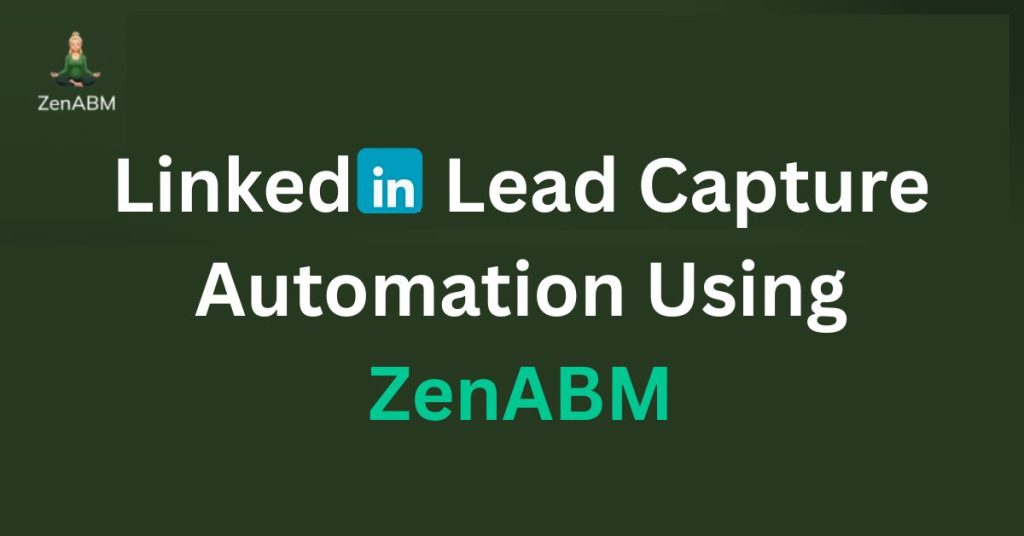If you are running ads on LinkedIn and want a reliable LinkedIn ad lead capture automation in your CRM, such as HubSpot/Salesforce, you have three practical routes to make it happen.
The first is the default approach, but it is insufficient for most B2B teams. The second captures more, yet demands heavy manual effort. The third is automated and superior (spoiler: it is ZenABM), which turns LinkedIn ad lead capture automation into a hands-off workflow.
Let’s walk through all three.
How to Push LinkedIn Ad Leads into Your CRM: Quick Summary
- HubSpot Click+Form Tracking
- Needs HubSpot tracking code, UTM parameters, and a same-session combination of ad click and form fill.
- Breaks when cookies fail or when the click and form occur in different sessions.
- LinkedIn Insight Tag + Business Manager + CAPI
- Can capture view-through outcomes with a complex multi-step setup.
- Requires repeated manual lead exports and uploads, which slows teams down.
- Struggles with cross-device journeys and multi-contact influence at the same company.
- MQA Tracking via ZenABM (Best Method)
- Reads company-level engagement directly from the LinkedIn API.
- Syncs all engagement signals into your CRM automatically with no spreadsheets.
- Elevates hot accounts so you pursue real buying committees, not isolated leads.
- Simplifies attribution and avoids cookie reliability issues.
Way no.1: HubSpot’s Click+Form Tracking
This is the most basic option.
Install HubSpot’s tracking script on your landing pages and add UTMs to your LinkedIn ad links.
The UTMs stamp the source as “LinkedIn,” and HubSpot’s cookie (hubspotutk) stores those parameters on arrival.
This method pushes a LinkedIn ad lead into your CRM only when all of the following conditions hold true:
- The visitor clicks on your LinkedIn ad.
- That same visitor completes a form.
- Both actions occur within the same browser session.
Yes, HubSpot supports cross-session attribution in theory, but it depends on cookies that often fail in practice:
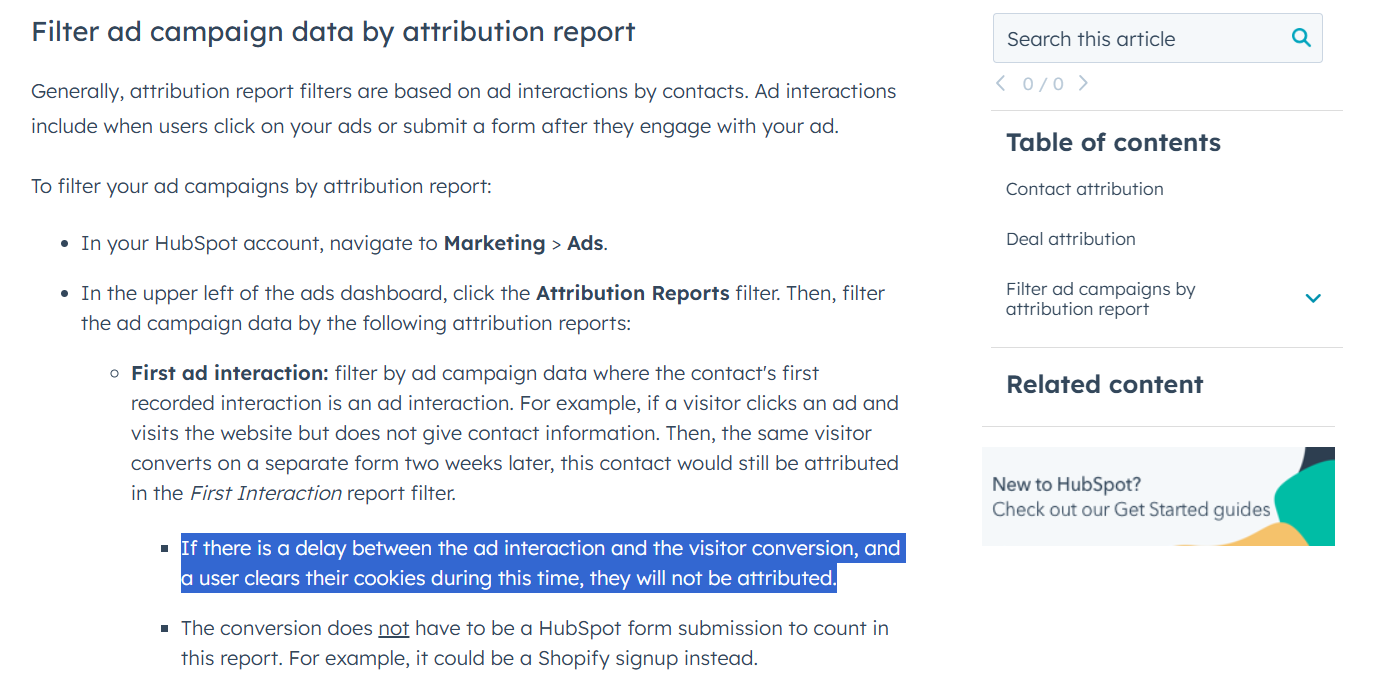
The entire chain assumes the browser keeps the HubSpot cookie intact. If the person clears cookies, switches devices, changes browsers, or returns after a long gap, HubSpot loses the trail. The form then appears to come from a new visitor with no LinkedIn link.
Way no. 2: LinkedIn Insight Tag + Business Manager + Campaign Manager + CAPI
The first approach misses view-through attribution, and cross-session click-through tracking rarely connects the dots.
Here is the more advanced workaround:
- Install the LinkedIn Insight Tag on all pages of your site.
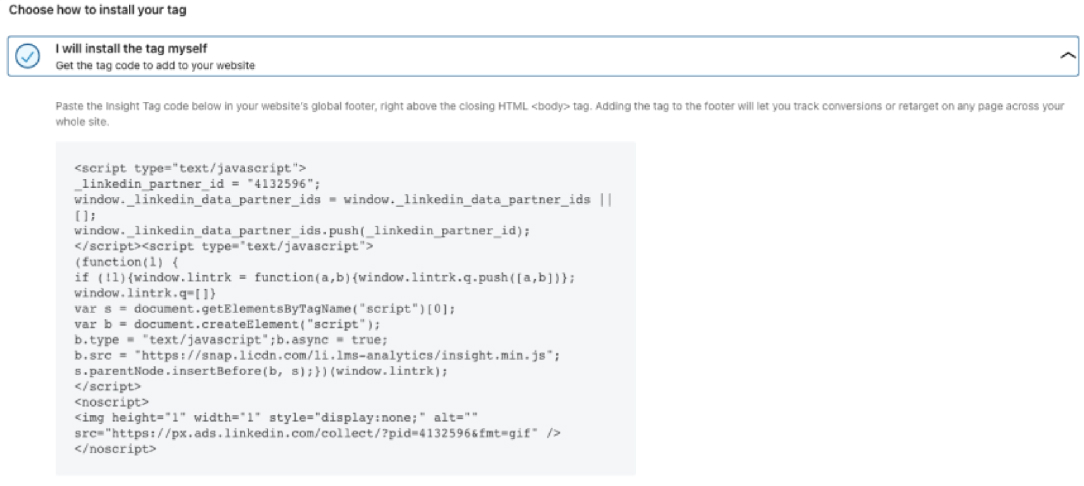
- Then configure conversion rules in Campaign Manager’s Conversions tab:
- Website Tag Conversions: form submissions or link clicks that load a thank you page.
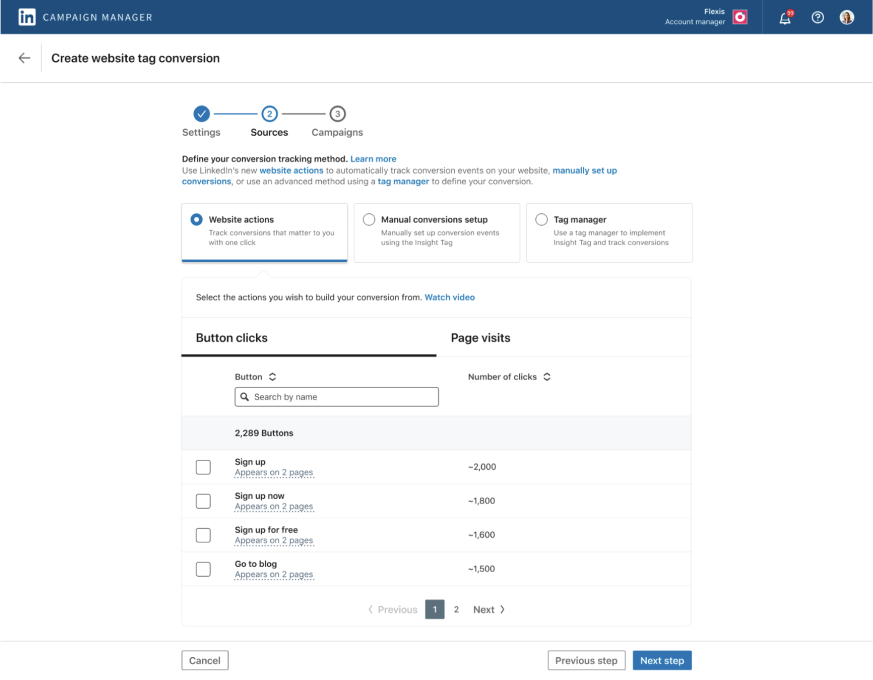
- URL/Page Conversions: visits to a specific URL after an ad click, perhaps a bottom-of-the-funnel blog post.
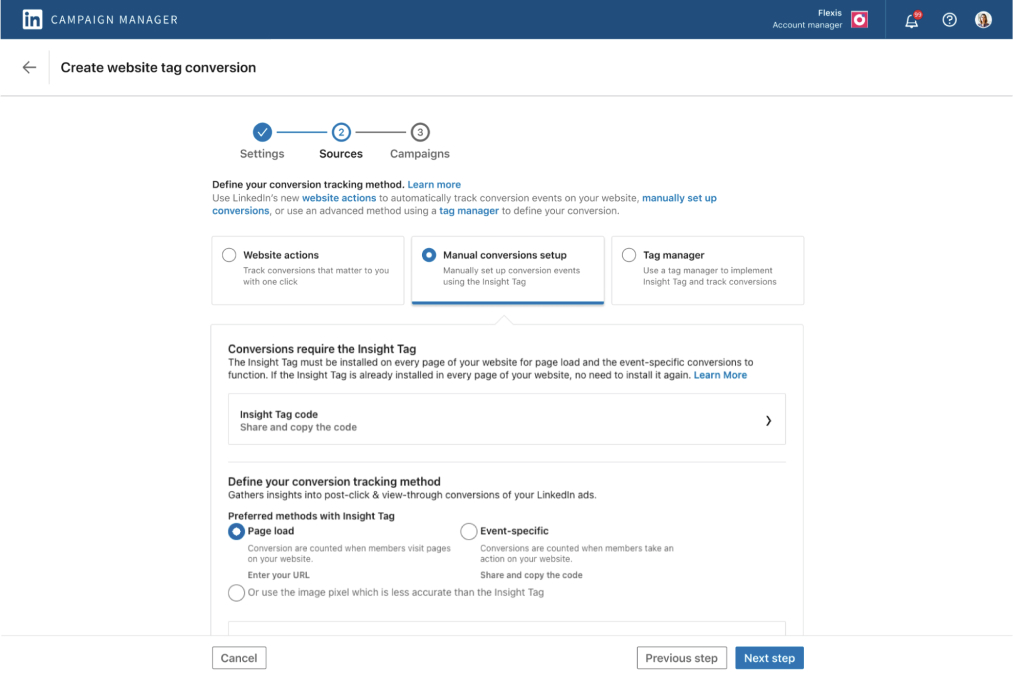
- Event-Specific Conversions: actions that do not change the URL, for example, an AJAX form submission.
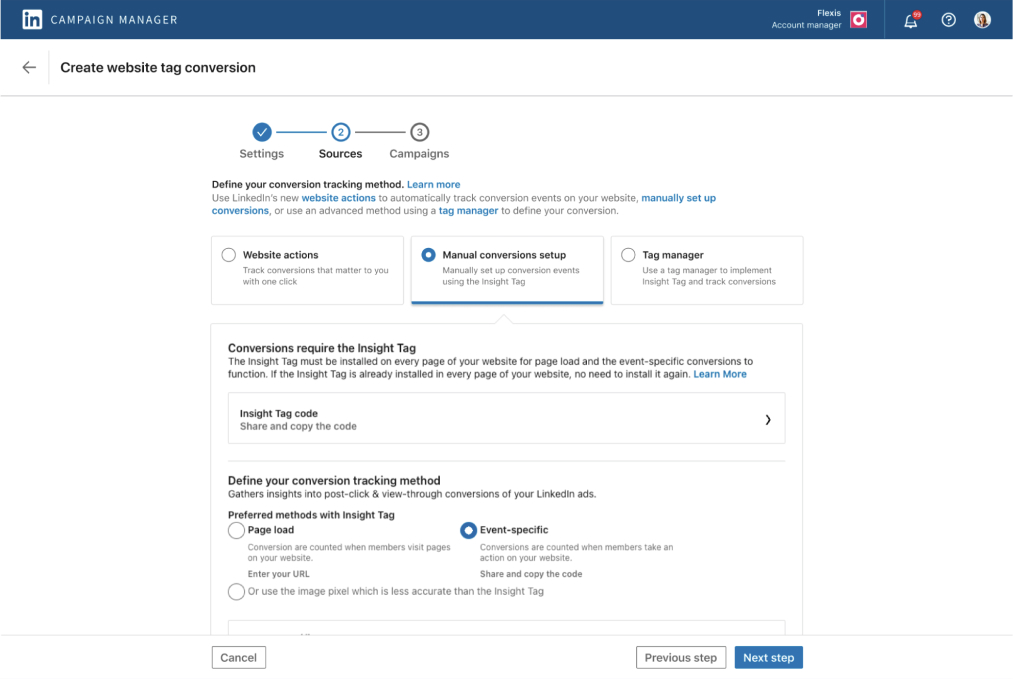
And configure CAPI:
- Recreate the same conversion rules in Campaign Manager.
- Send server events to
/conversionEventswith the rule URN, timestamp, value, and user identifiers.
- Website Tag Conversions: form submissions or link clicks that load a thank you page.
- Next, set up Business Manager’s Revenue Attribution Report by connecting it to your CRM:
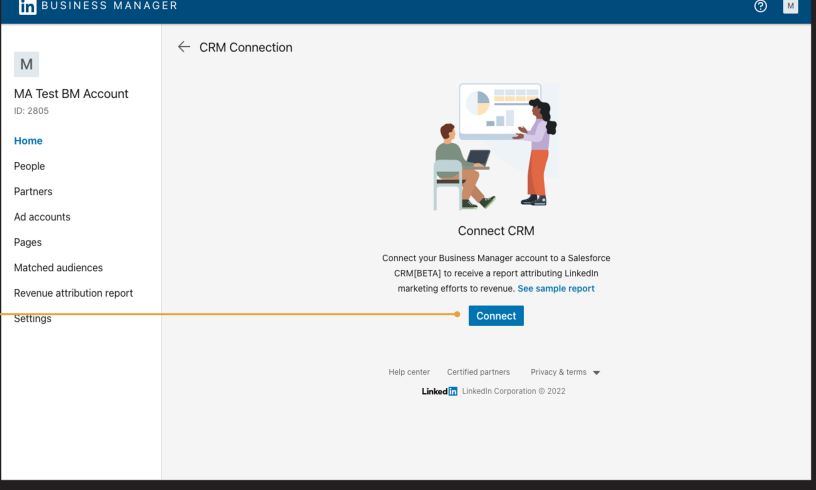
- Provide the requested credentials such as Username, Password, Environment URL, and Security Token:
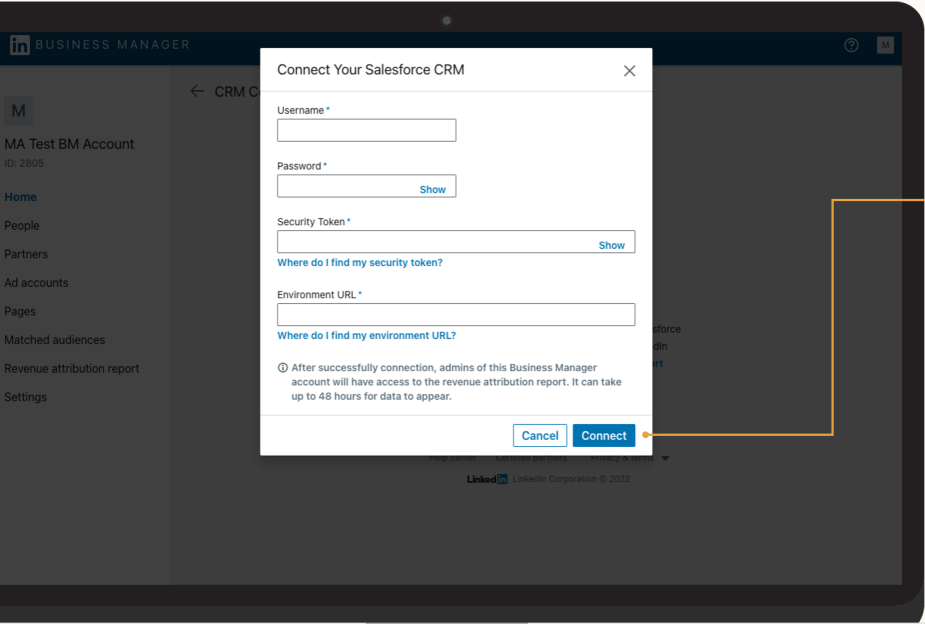
- Expect data to populate within roughly 72 hours.
At this point, you can see the view-through outcomes. People who saw a LinkedIn ad and later converted via another channel will appear in your reports.
However, you must still download lead files from Business Manager and upload them to your CRM, such as HubSpot, on a frequent cadence.
Even with all of this, you run into three issues:
- A person views the ad on one device, then submits the form on another device. Attribution to LinkedIn is lost.
- One employee sees the ad while a colleague submits the form. The platform does not connect the two, so influence is missed.
- You move files around. These are leads, not real-time CRM conversions, and you must upload them more than once a day to act while they are hot.
One Additional Step for the Workaround
To handle cross-device cases or viewer and submitter mismatches at the same company, lean on Campaign Manager.
The Companies tab lists company-level impressions, clicks, and engagements. You can check whether a new lead’s company shows recent engagement and then infer that LinkedIn contributed.
It works, yet it adds daily manual effort. You would track each lead import, look up the company in Campaign Manager, and reconcile the two throughout the day, which is not a scalable LinkedIn ad lead capture automation by any measure.
Way no. 3: Ditch the Click-through Lead-Level Tracking for View-through MQA Tracking Using ZenABM
Method one ignores view-through behavior, which is a major gap on LinkedIn, where CTR averages only 0.4 to 0.5%: 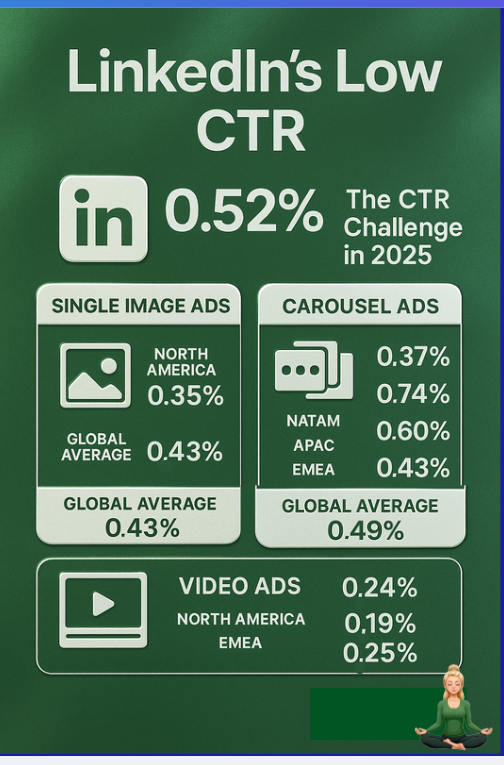
That means 4 to 5 clicks per thousand impressions, while many people still convert later through other paths.
Method two can capture view-through activity and push it toward your CRM, but it relies on continual manual ops and context switching across tools, which is not realistic when you want sales to engage immediately.
The smarter approach is to focus on MQAs, meaning marketing qualified accounts, rather than isolated leads. In B2B buying, committees decide, not single clickers.
Here is where ZenABM gives you true automation.
It pulls company-level impressions, clicks, engagements, and ad spend from the official LinkedIn API:
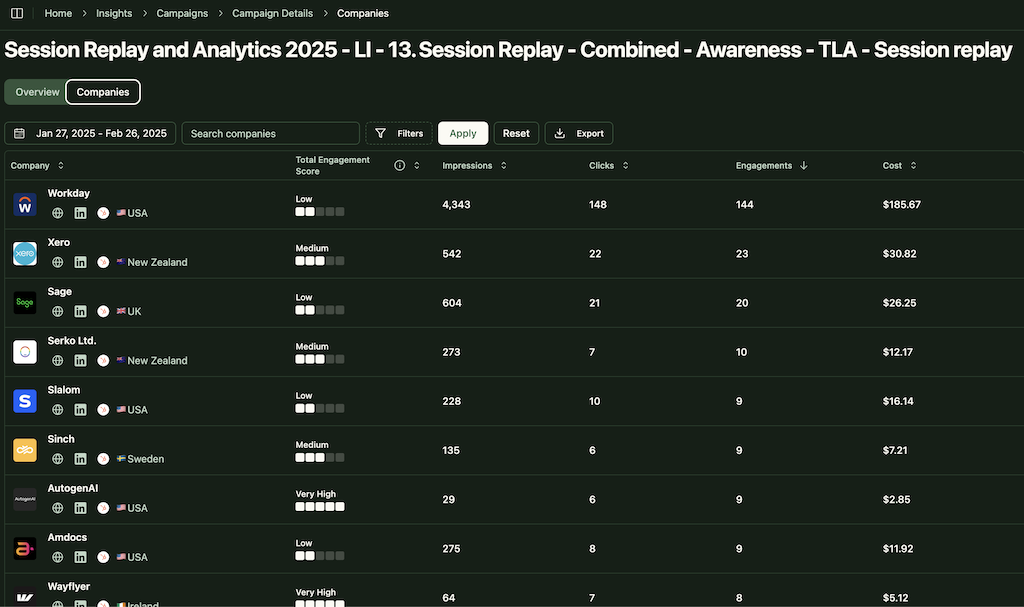

Then it writes those fields to your CRM as company properties automatically:
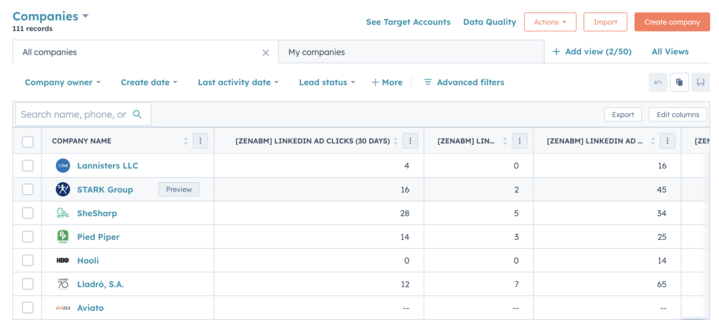
Your sales team sees every meaningful company-level signal in the system they already use, which is exactly what LinkedIn ad lead capture automation should deliver.
Any account with strong engagement becomes an MQA and should receive prompt BDR attention.
If you prefer a hybrid of MQAs and traditional lead capture, that is simple as well. When a form arrives, check the company’s recent engagement in your CRM fields. High engagement implies LinkedIn influence, so you can attribute the lead confidently.
This keeps both companies and their individual leads on your radar at all times, so marketing and sales do not miss a single hot account.
Additional Features of ZenABM for LinkedIn ABM Success
ZenABM goes beyond syncing. It adds intelligence that moves deals forward.
Live Engagement Scoring & Auto-Assignment
ZenABM calculates a rolling Current Engagement Score, for example, the last 7 days, flags hot accounts, updates ABM stages, and routes them to BDRs automatically without custom workflow building.


Custom ABM Stage Rules
Define stage logic that blends ad signals with CRM activity so every account lands in the right place on your funnel.
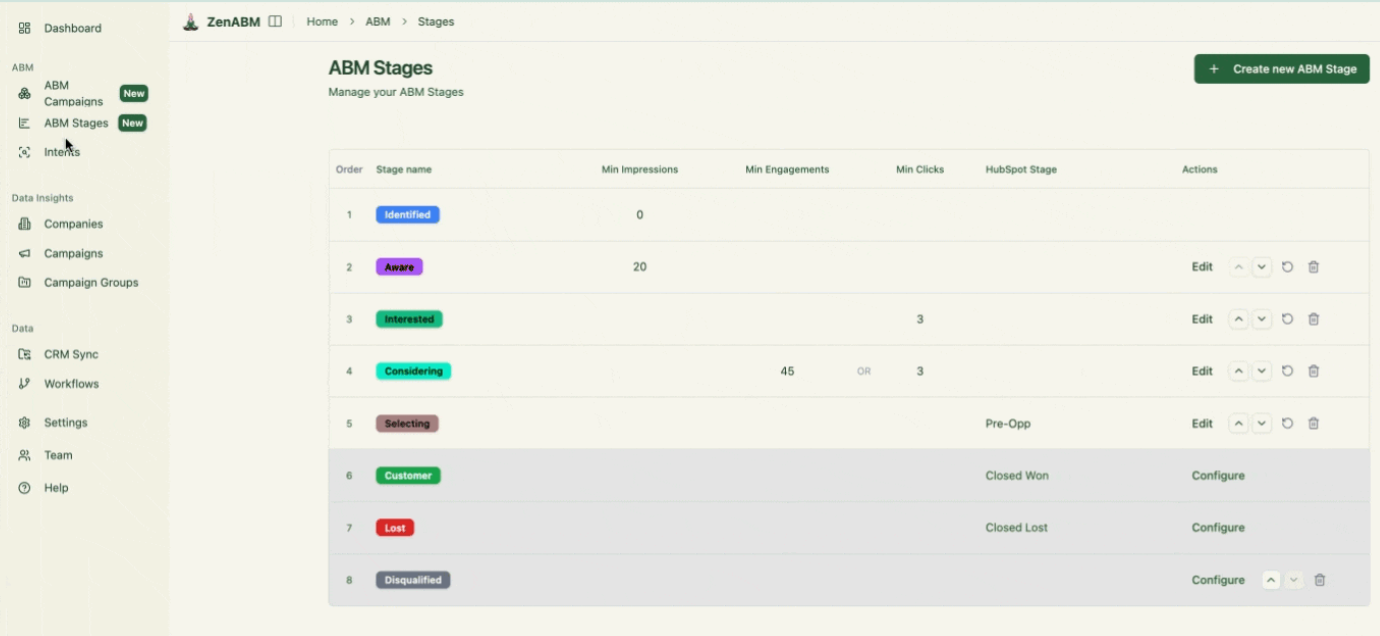
Revenue-Linked Campaign Insights
ZenABM not only pushes engagement into the CRM. It also pulls deal values back to match pipeline and revenue with the accounts that engaged.

Built-In ABM Reporting Dashboard
Prebuilt dashboards show pipeline, spend, ROAS, and top engaged accounts, segmented by campaign and account. The calculations are already wired.

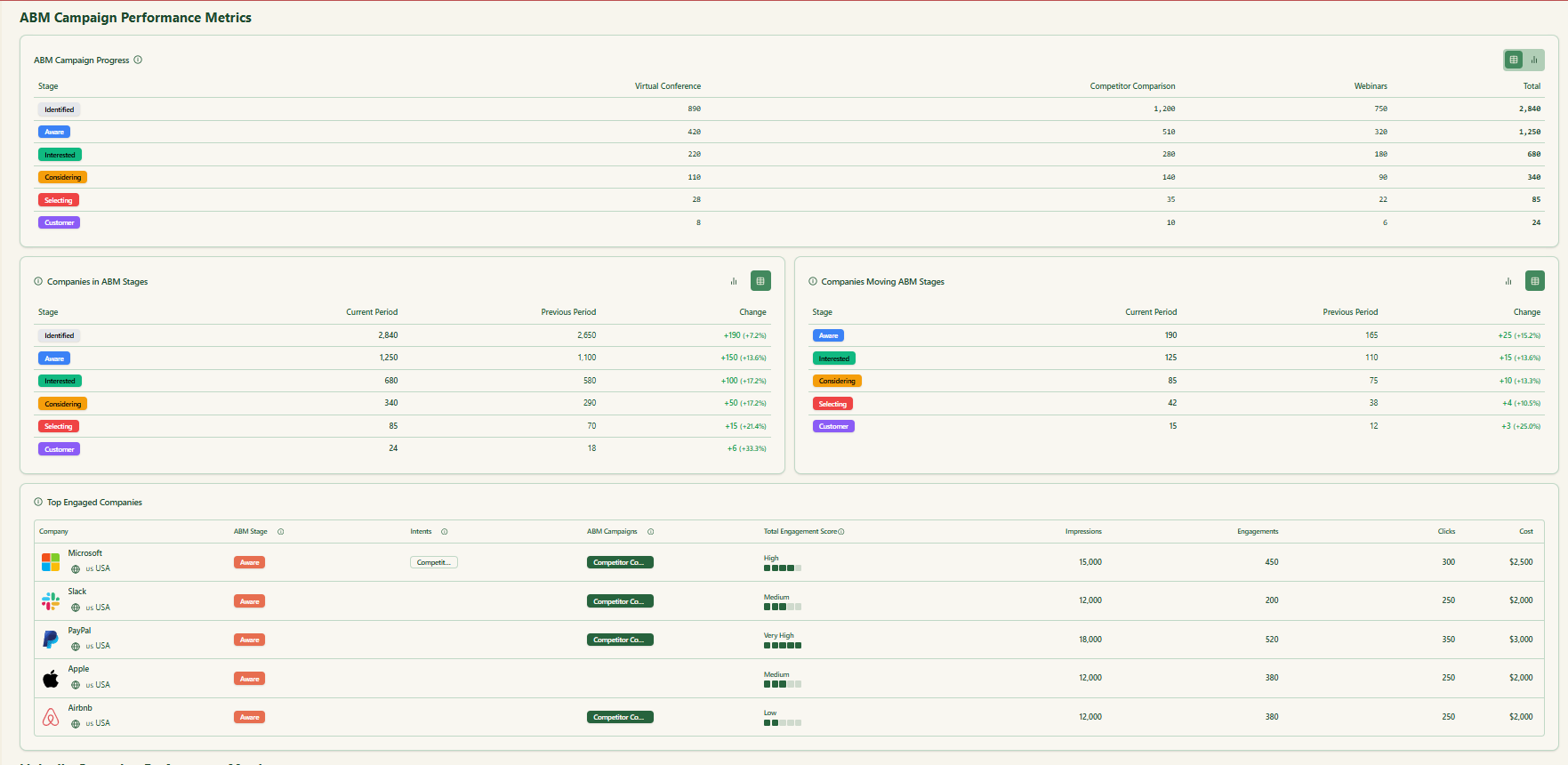

Simplified Retargeting for High-Intent Accounts
- Run discrete LinkedIn campaigns by use case or feature set.
- Use ZenABM to identify which companies engaged with each theme.
- Map those accounts to CRM opportunities and retarget with creative that matches their interests.
Buyer Intent Insights
If you segment by features or problems, ZenABM detects which companies engage with which themes and writes that intent to the CRM as properties. No complex workflow building required.
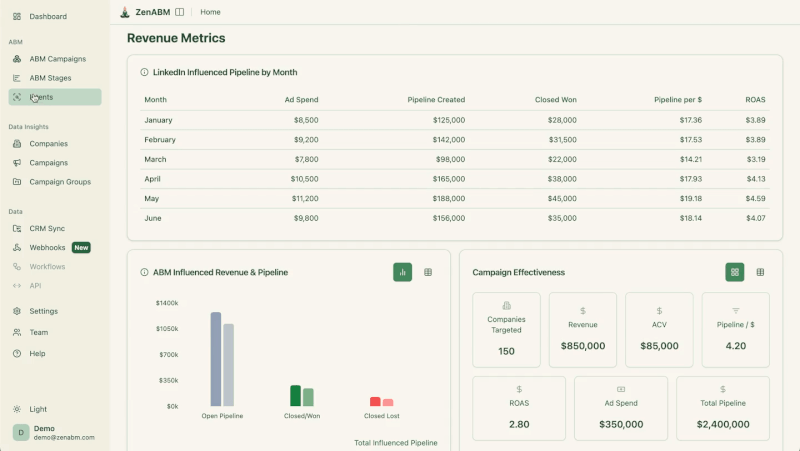
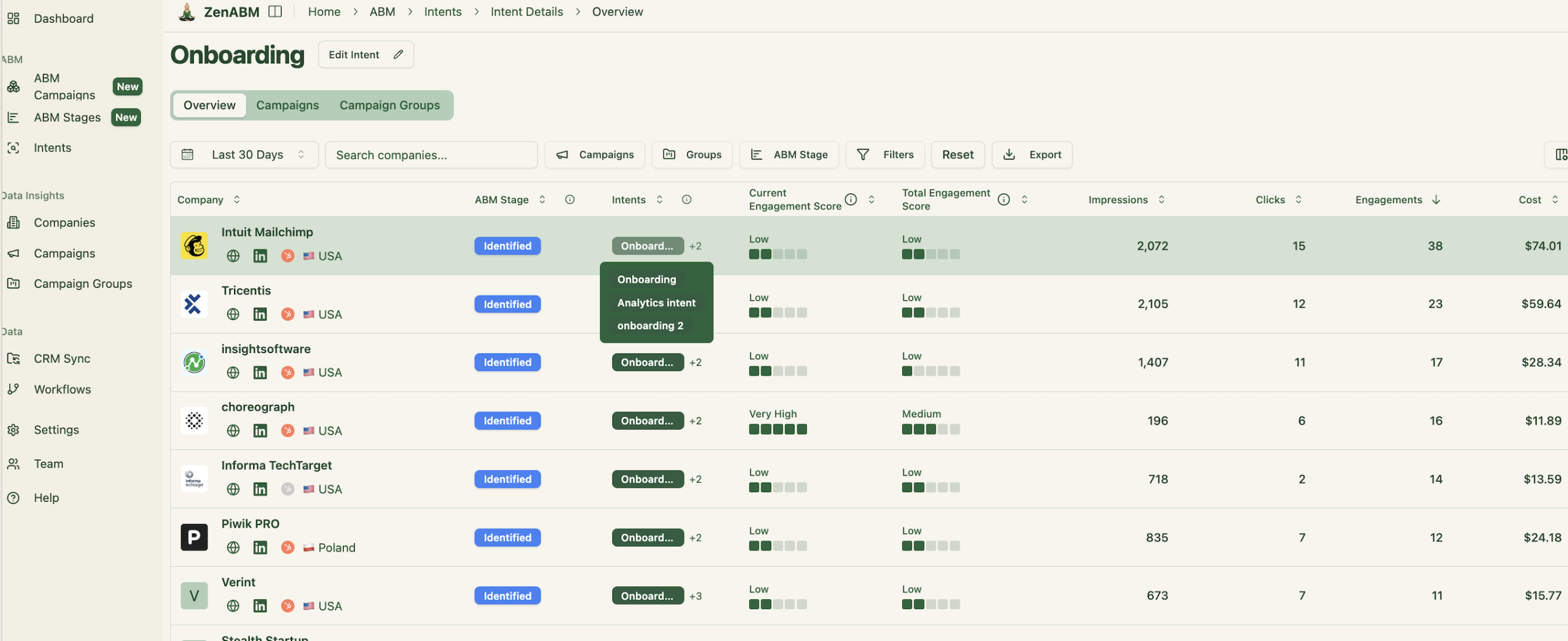
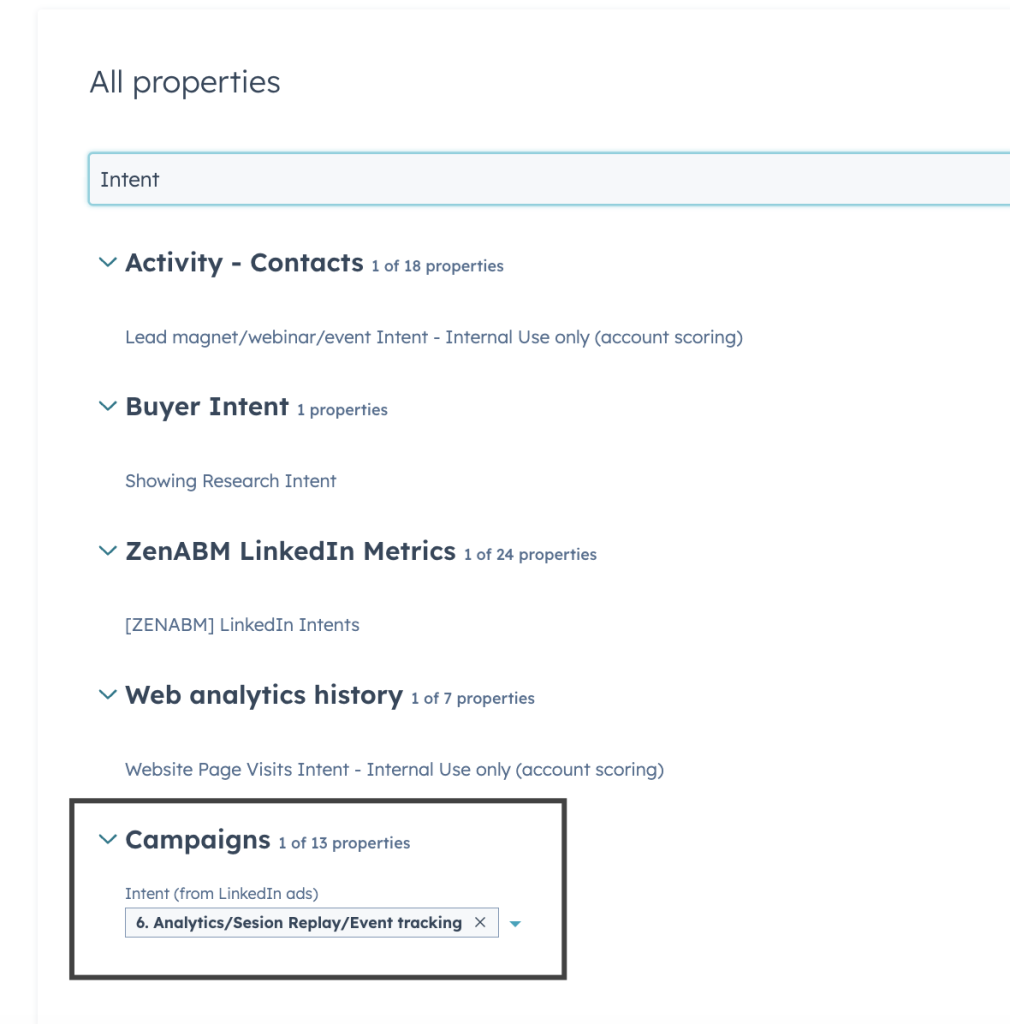
For advanced build tips, check the full guide on running ABM on LinkedIn.
Conclusion: Switch to MQAs and Automate It with ZenABM
If you still depend on cookie-based methods or file uploads to push LinkedIn ad leads into HubSpot, prepare for missed attributions and slow reaction times.
Here is the reality. Lead-level tracking on LinkedIn underperforms because CTRs are low, journeys span devices, and buying happens by committee. A true LinkedIn ad lead capture automation should capture account-level signals, not just isolated clicks.
Move to MQAs. Let your CRM operate on company engagement that reflects real intent. ZenABM automates collection, scoring, syncing, and routing so your sales team gets a clear, actionable view.
Stop burning hours reconciling spreadsheets. Start prioritizing high-intent accounts with confidence.
Ready to upgrade your capture and routing workflow?

